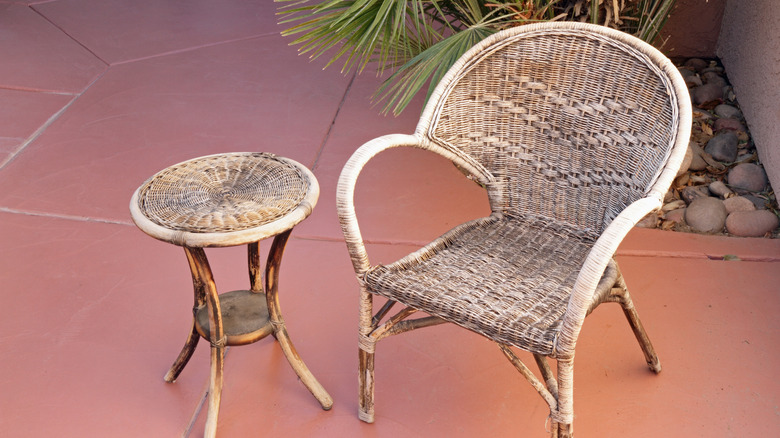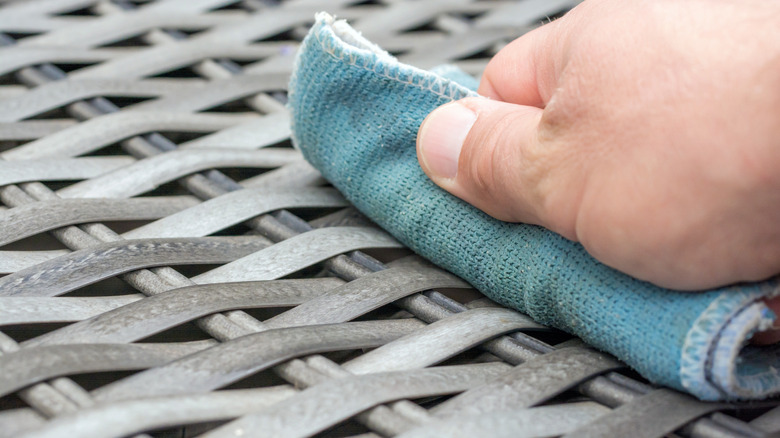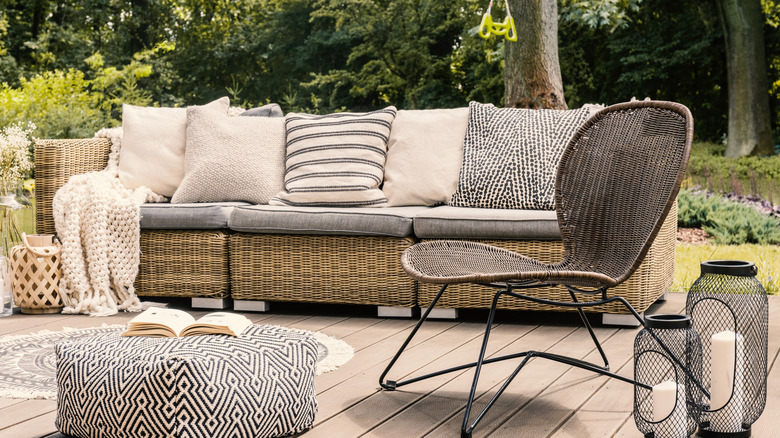How To Transform Your Old Wicker Furniture Into A Stunning Outdoor Set
The classic woven texture of wicker furniture makes it easy to identify. Oozing with cottage charm, wicker is a timeless option for outdoor seating. However, whether or not wicker furniture is durable enough to last depends on the material it's made of and how well you maintain it. Natural wicker materials tend to show wear quickly when used outdoors. If your wicker set has been through several seasons, it could be showing its age with discoloration and broken sections. Or maybe you scored an older wicker set at a garage sale that you want to transform with simple restoration processes. Giving it a thorough cleaning, fixing broken areas, and refinishing the material gives it a renewed look to add charm to your outdoor seating area.
Wicker refers to the type of weaving the furniture has rather than a specific type of material. Newer outdoor wicker furniture is typically made of synthetic materials like high-density polyethylene, but older outdoor wicker furniture could be made of natural plant-based materials like rattan, bamboo, seagrass, or water hyacinth. Those natural materials don't typically hold up well outdoors in direct sunlight or when exposed to moisture. Outdoor use of natural wicker could cause the material to dry out and break, fade, or otherwise show signs of wear. Restoring the furniture brings it back to life and could make a beautiful outdoor seating set for an enclosed or covered front porch.
Clean and repair your old wicker furniture
Restoring your wicker furniture to update your front porch starts with a thorough cleaning. Remove any loose dirt, pollen, and other outdoor debris with a vacuum equipped with a brush attachment or a soft cloth. Compressed air or a toothbrush helps you remove debris from tight spots. If the furniture needs a deeper clean, use oil soap in warm water diluted according to the package instructions. Rinse the furniture well and let it dry completely before you do anything else with it. Natural wicker furniture can mold or mildew when it's exposed to excess moisture.
Older wicker may crack or split, which could weaken the structure or leave it looking bad. Light sanding helps smooth rough areas, particularly in areas where the material is cracked or damaged. For small issues, use a little wood glue to repair the splits or breaks in the piece. Applying a clamp or painter's tape to the area helps keep the pieces in place correctly until the glue can dry fully.
Dress up the wicker furniture
Putting finishing touches on your wicker furniture beautifies the pieces and offers some protection against outdoor elements. For natural wicker, consider applying boiled linseed or teak oil once the wicker is fully dry. Wipe away any excess oil from the surface and let it dry for several days before using the furniture. The oil helps restore the furniture's natural beauty.
Another option is to repaint your wicker furniture to bring it back to life. If the furniture is already painted, you'll want to scrape away loose paint and sand the surface lightly to prep it for new paint. Apply primer to help the paint stick. Then, apply two coats of paint using either a natural bristle brush or sprayer.
Leaving your wicker plain allows the texture to show, but it doesn't create a comfortable, inviting option if you plan to sit on the furniture frequently. Adding outdoor cushions to your restored wicker seating improves your comfort level and allows you to bring in some color. Decorative outdoor throw pillows add to the finished look. If your set includes a wicker table, consider adding a decorative tray or other outdoor decor items to dress up the space.


